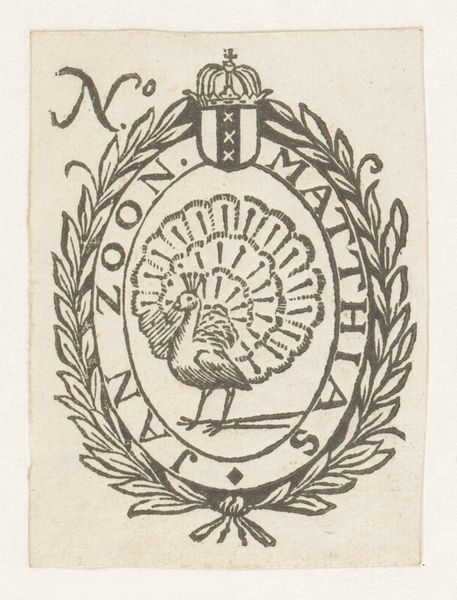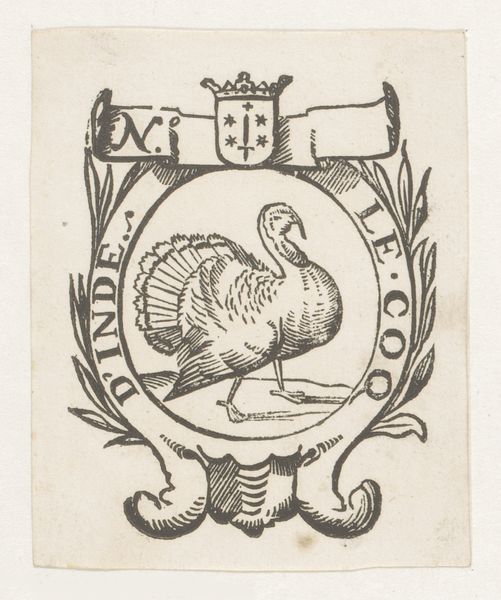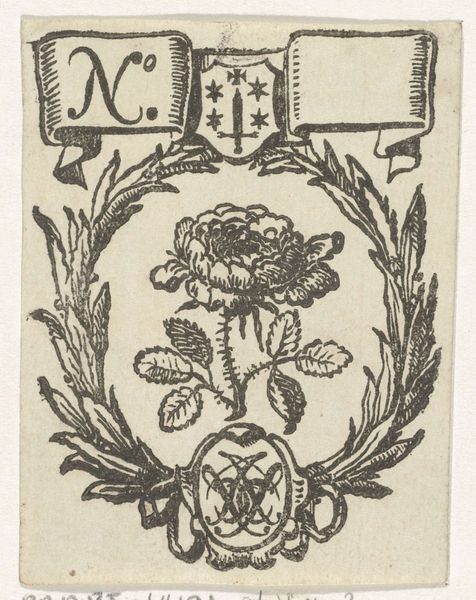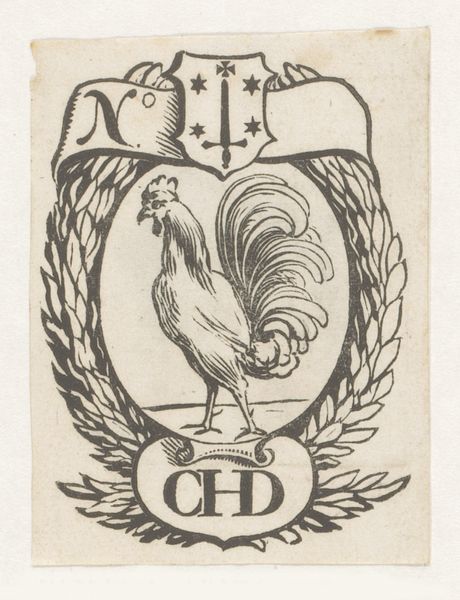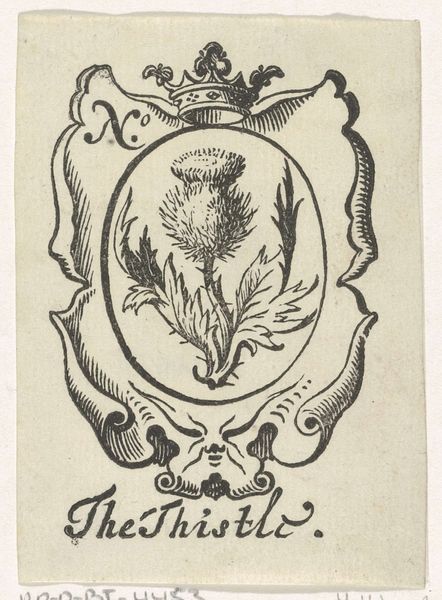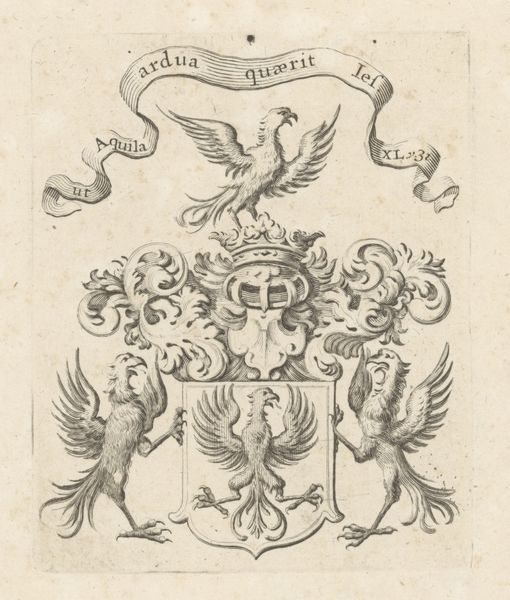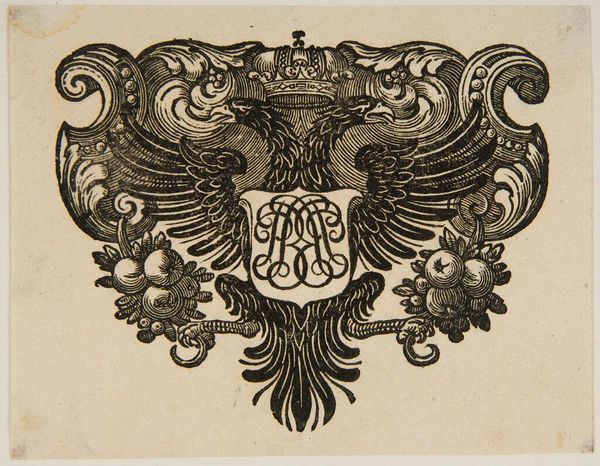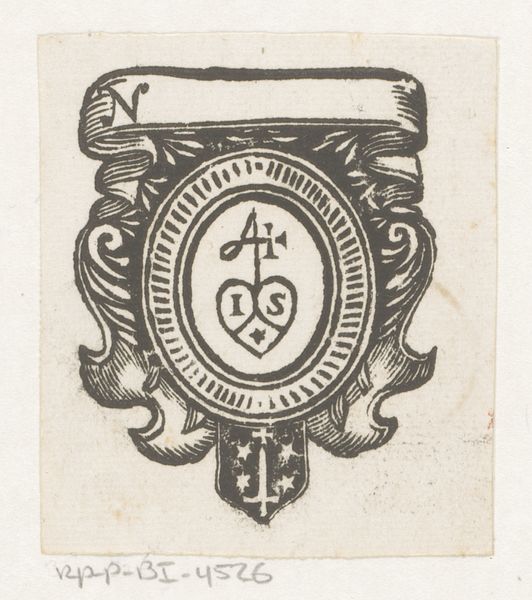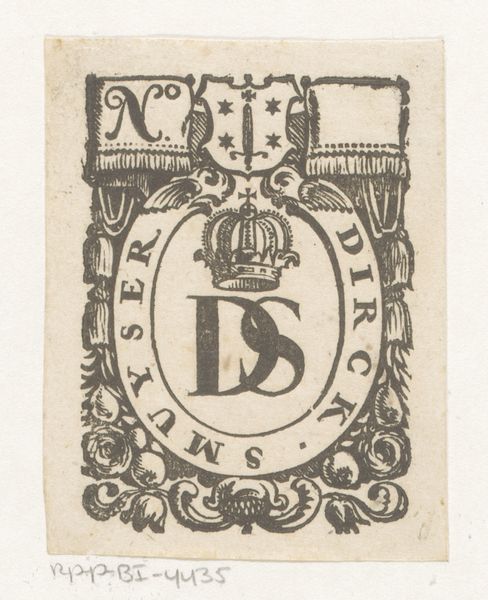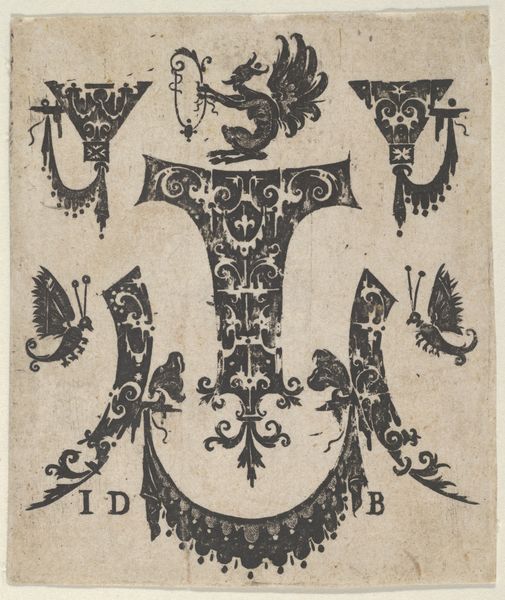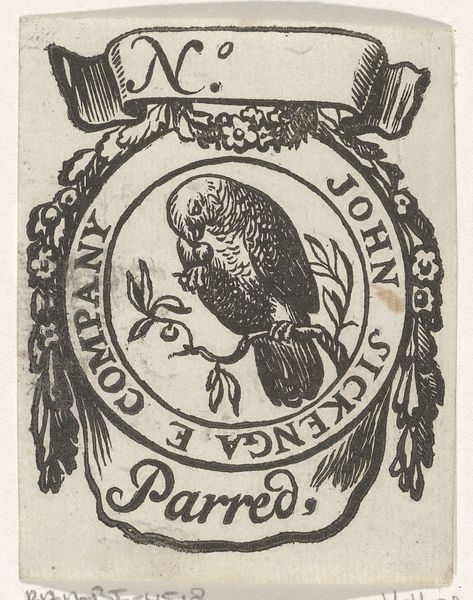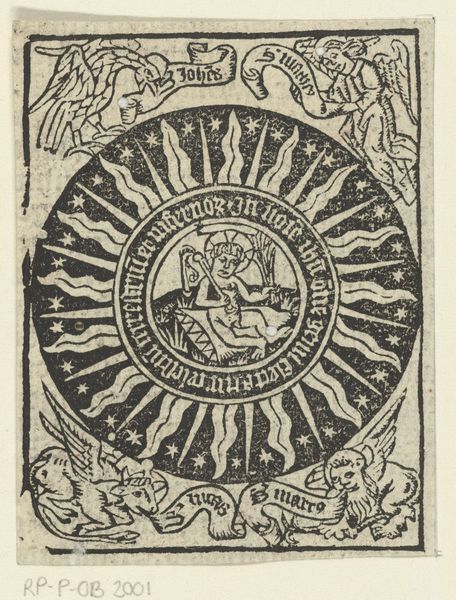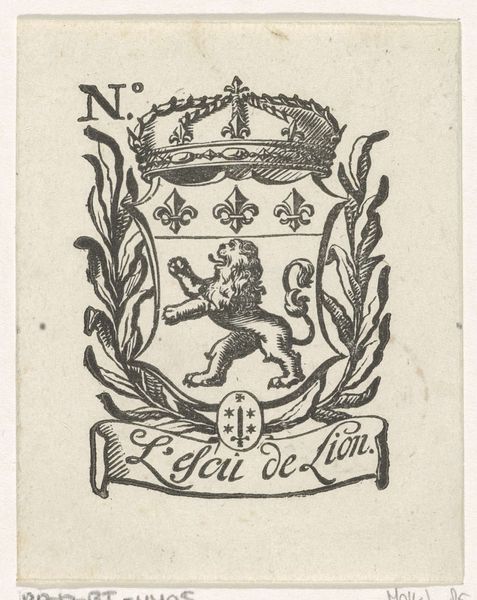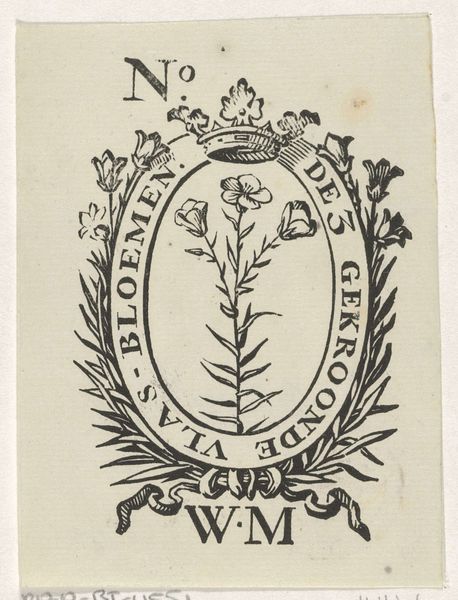
drawing, print, ink, engraving
#
drawing
#
pen drawing
#
dutch-golden-age
# print
#
pen illustration
#
old engraving style
#
ink
#
geometric
#
engraving
Dimensions: height 115 mm, width 84 mm
Copyright: Rijks Museum: Open Domain
Editor: So, this is a 17th-century engraving, “Vignet van Elias Geschier te Haarlem,” made by an anonymous artist using ink. The sharp contrast and detail feel almost like a heraldic emblem. What catches your eye when you look at it? Curator: It sings of secrets, doesn't it? Look at that peacock – it's not just preening for the camera; it’s flaunting the very feathers that other birds can only dream of. Now, who was Elias Geschier, and why did someone feel the urge to immortalize him with such flamboyant imagery? Is he a prince of merchants or a peacock amongst men? Editor: A peacock amongst men, I love that. Maybe the peacock represents his character? Like a symbol of pride? Curator: Precisely! Or perhaps a reflection of the city of Haarlem itself? The Dutch Golden Age was a period bursting with pride, trade, and new discoveries. It's easy to imagine this vignette gracing a title page of an important document or map. Consider how this era embraced allegory and symbolism; how might the crown above ‘Haarlem’ play into that symbolism, in addition to the peacock, and what riches do those crossed quills represent? Editor: That makes so much sense. It’s like a visual representation of Haarlem’s identity, wrapped up in this one image! And you're right, the quills... Maybe they hint at the importance of scholarship and record-keeping? Curator: Ah, see! You’re unraveling its whispers already. This isn’t just ink on paper; it's a little time capsule of cultural aspirations. Imagine flipping through such a volume back then, what tales it promises! What possibilities. Editor: It's incredible how much history and meaning can be packed into a tiny image. Now, when I look at it, I see it a bit differently... like I can hear its story, too. Curator: That, my dear, is when art truly begins to speak.
Comments
No comments
Be the first to comment and join the conversation on the ultimate creative platform.
